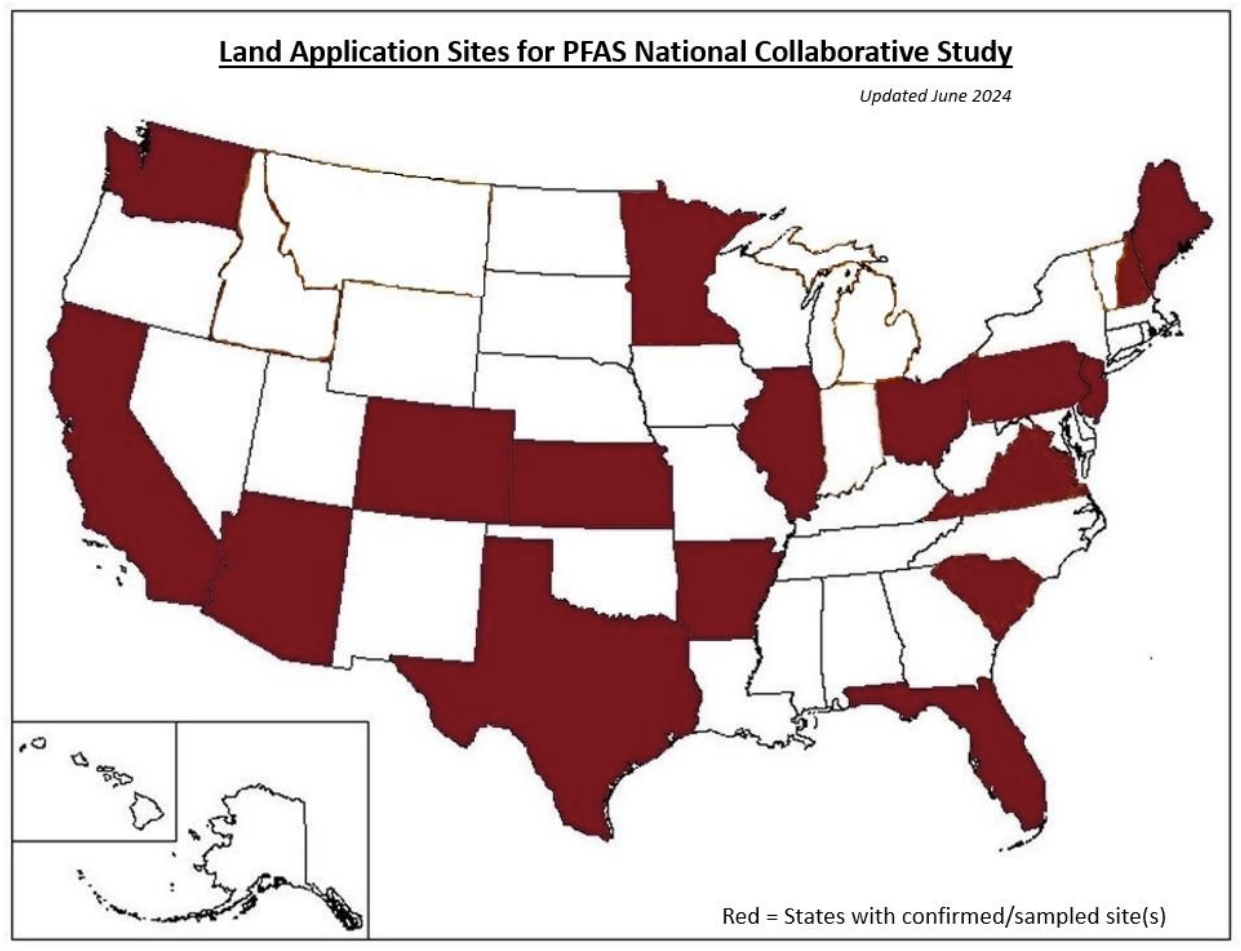National PFAS Study Concludes PFAS in Municipal Biosolids Unlikely to Migrate to Groundwater
In January 2025, Dr. Ian Pepper and his research team at Arizona State University completed Phase 1 of the National Collaborative PAS Project. This study evaluated the impact of land application of non-industrially impacted (municipal) biosolids on groundwater contamination with per- and polyfluoroalkyl substances (PFAS). Researchers wanted to determine whether biosolids land application is a significant route of human exposure to PFAS via contamination of groundwater subsequently used as a potable water supply.
Soil samples from 23 different sites across 17 states (as shown in Figure 1) were collected as part of this study. The sites varied in type of biosolids (Class A and Class B) and history of land application with some plots having experienced land application since the 1980s.
Figure 1. States where samples were collected for the study
Nine soil cores were collected from each of the 23 sites for the following three loading rates:
three from control plots which have never experienced biosolids land application,
three from a plot with a “low” loading rate of biosolids (with lifetime loading rates ranging from 2 to 70 dry tons/acre), and
three from a plot with a “high” loading rate of biosolids (with lifetime loading rates ranging from of 20 to 280 dry tons/acre).
For each of these nine soil cores, the core was evaluated at three different depths (1, 3, and 6 feet below the surface) to understand how concentrations of PFAS vary at different soil depths. These soil samples were analyzed for 25 different PFAS compounds.
Data across the different sampling locations indicated that there is an increase in PFAS concentrations due to land application of biosolids, but the increases observed were mostly less than one part per billion (ppb). Importantly, median PFAS concentrations of four important PFAS (PFOA, PFOS, PFHxS, and PFNA), the first two of which are federally regulated in drinking water, were less than 1 ppb at the 23 different land application sites, regardless of land application loading rate. Median PFAS concentrations were also less than or close to soil screening levels (i.e., the levels considered safe for groundwater protection). Measurable PFAS concentrations in control plots that had never received biosolids were observed. Furthermore, the concentrations of PFAS decreased with increased soil depth.
The research team concluded that land application of municipal biosolids, without any industrial contamination, is unlikely to cause groundwater contamination since the soil PFAS concentrations were lower or close to soil screening levels and decreased with soil depth.
The groundwater concentrations measured in this study were highly variable, likely due to other factors (e.g., irrigation water, leachate from landfills, effluent from industrial plants, and pesticide run off). Since each soil has unique properties, individual soil screening levels should be developed to understand the migration of PFAS into groundwater.
Phase 2 of this study will evaluate the indirect route of exposure to PFAS via consumption of food grown on plots where biosolids are land applied. The same sites evaluated in Phase 1 will be studied in Phase 2 to allow for paired data sets across both phases. Multiple crops including corn, oats, and alfalfa will be grown and studied for their specific crop uptake of PFAS and potential ingestion risk.
One of the BABC’s goals is to advance independent scientific research on the safety and benefits of biosolids. In line with that goal, the BABC has provided partial funding to Phase 1 and Phase 2 of this important national PFAS study.

